26/08/2024 – 31/08/2024
Day 1 – Delft to Weimar
The journey did not start well as our ICNG to Rotterdam kept hitting the brakes only seconds after departure from Delft. After several attempts the conductor told us to get off and board the Intercity on the opposite track which would be travelling in the same direction. This would not have been possible had it happened only one day earlier as this Monday was the first day that all 4 tracks were being used at Delft station. The connections for today were tight so I had to run for my connecting Intercity to Utrecht Centraal which confused me at first because it was operated with an SLT, a train usually in service on Sprinter routes. Luckily the departure boards noted this so I hopped on the train and it got us to Utrecht with a 5-minute delay where I boarded the Intercity to Arnhem Centraal. This is where my Dutch journey ended and I boarded the VIAS RE19 to Oberhausen Hbf.
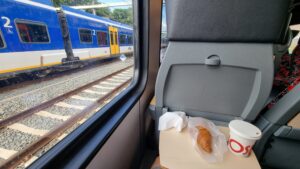
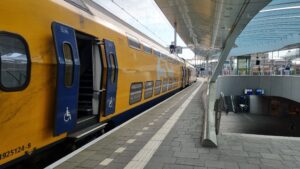
The goal for today was Weimar and due to the lack of good east-west connections and the fact that the D-ticket only allows the use of regional transportation, this was going to be a long trip. From Oberhausen I took the RE3 to Hamm where I had lunch and admired the ugliness of bombed German cities. My next train was supposed to be a long trip from Hamm to Kassel, a regional hub that has an interesting station layout and long-distance connections. Sadly our train did not let us enjoy this because we broke down in the small village of Willebadessen. I was expecting some problems on this trip, it was Germany after all, so I wasn’t surprised. The conductor told us a replacement train would arrive on the other platform. I was skeptical about this and I turned out to be right since the “replacement train” was just the next scheduled train which was already packed to the brim and now had to transport our group of at least 150 passengers as well. I arrived in Kassel 1 hour late.
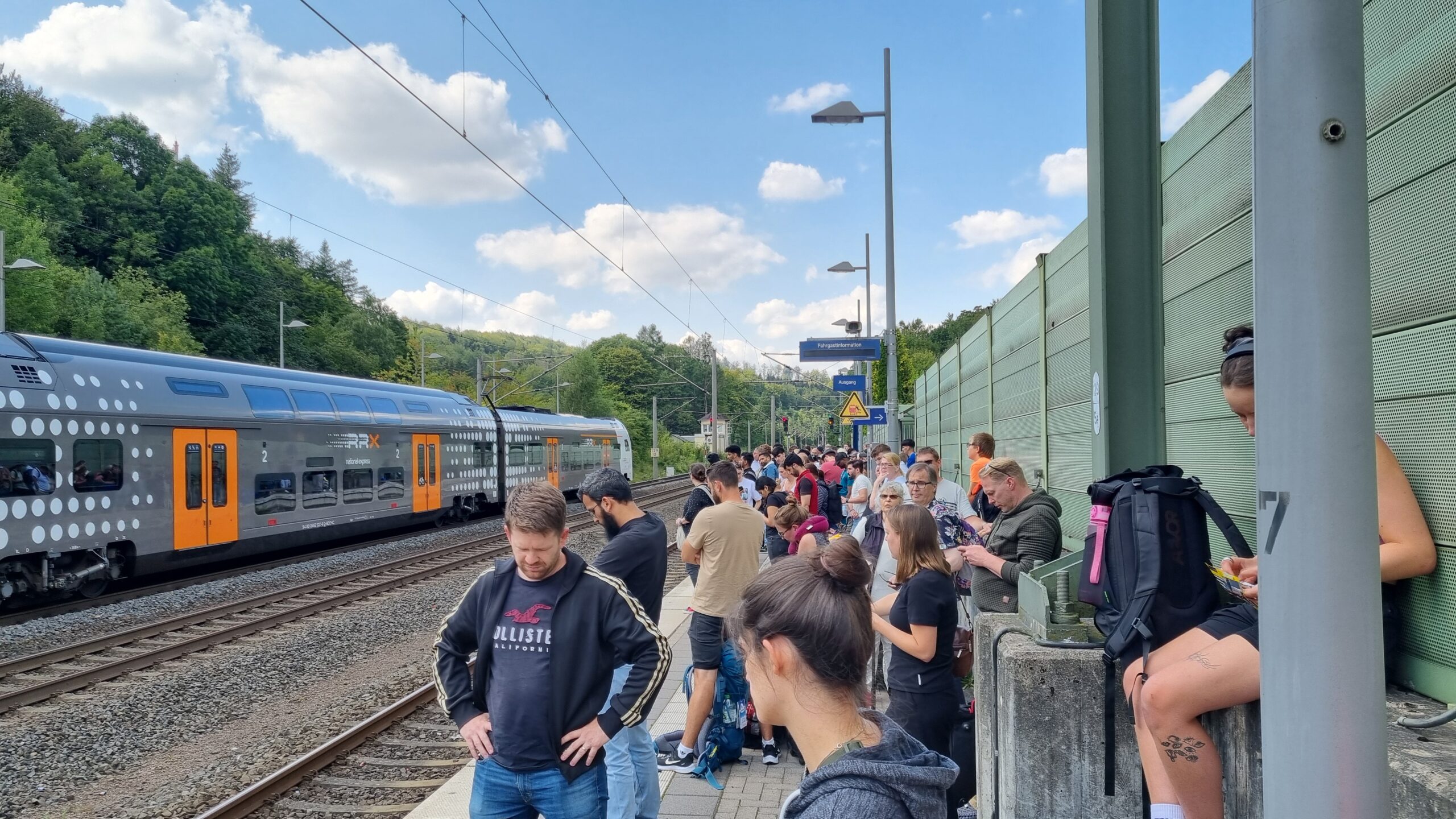
From Kassel Wilhelmshöhe I had the choice of going the northern route to Erfurt or the southern one. The Southern one seemed a little more interesting and it turned out to be the better choice because the Northern route had issues later on. Via Bebra and Eisenach I arrived in Erfurt on trains operated by Cantus. So far 4 of my 9 trains have been Stadler FLIRT’s, a theme in Europe that I’m not happy with. The trains are good, don’t get me wrong. They’re reliable, mostly comfortable and look decent. But this makes them very attractive to buy and it seems like every other operator has made a purchase from Stadler in the last few years, including in the USA. Oh well, 1st world problems. My last train is a lovely BR612 diesel tilt train operated by DB from Erfurt to Weimar, which is where I will spend the night.

I want to travel on the cheap so I try to keep my accommodations under 30 euros per night. Tonight I will be sleeping in a lovely Hostel for €19,- in the city centre of Weimar. It’s called the Labyrinth Hostel and I highly recommend it if you are travelling on a budget through Weimar.
Day 2 – Weimar to Chemnitz
Now that I have reached eastern Germany it’s time to seek out some old railways that I found in my travel guide from the 70s. Not too far from Weimar is the village of Obstfelderschmiede from where a unique funicular leaves to serve the mountaintop villages of Lichtenhain and Cursdorf, the latter being reached after transferring onto a 100-year old electric railbus. I have to backtrack to Erfurt to catch a direct regional train to Rottenbach where I can change onto the wonderful Schwarzatal line which winds its way through a forested valley on a dinky single-car DMU. I don’t have to buy a ticket for the funicular as it is included in my D-ticket, awesome!
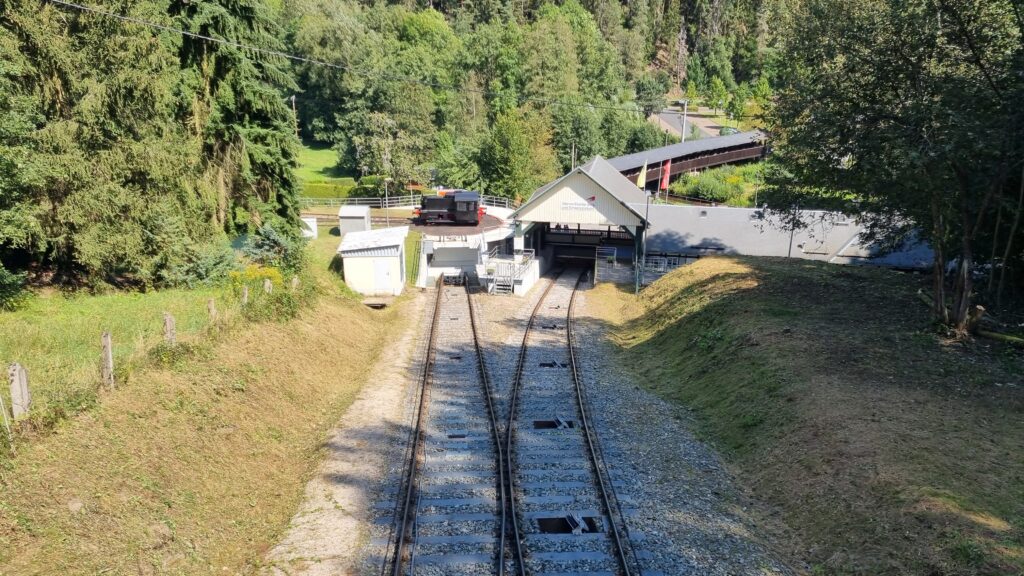
The funicular was built in 1922 to help the villagers get their goods up and down the hillside. No road had been built yet so they had been hauling everything 323 meters up to the town. The railway company wanted to be able to put cargo wagons on the funicular as well so they made one of the cars with a flat top on which they laid standard gauge rails. This made it possible to load a single railcar onto the funicular, transport it upwards and unload it again. This is quite unique in the world and I sure haven’t ridden one before. The other funicular car was a regular passenger wagon. Nowadays all goods transportation is done by truck so they converted the flat-top car to have a permanent open-deck car for us to ride on.
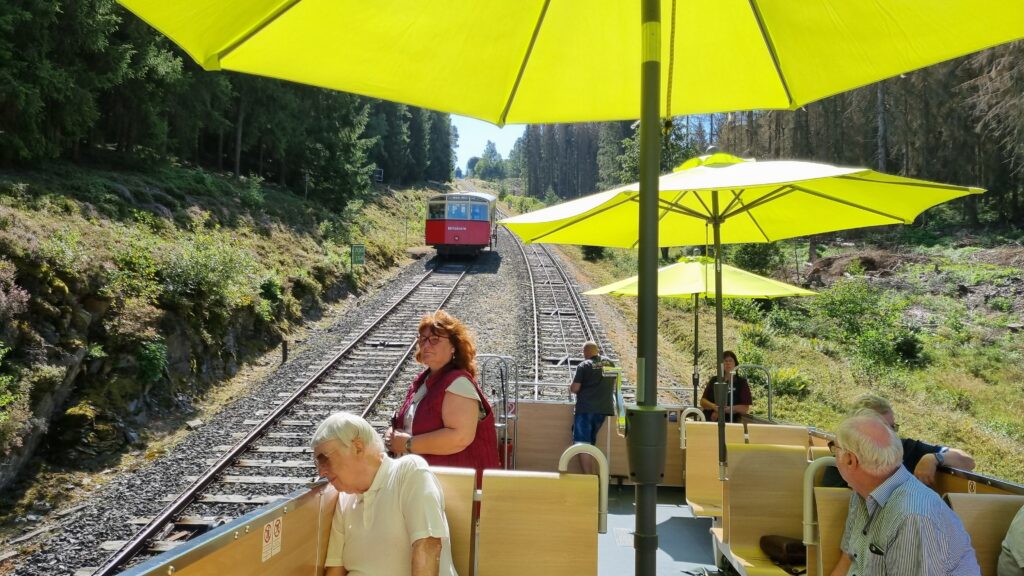
Once in Lichtenhain you can change onto the beautiful original electric traction car which takes you the remaining 2.6km to Cursdorf. After arriving at Cursdorf I took the same train back and hopped on the next funicular down, they run every 30 minutes and a trip takes 18 minutes. The train back to Rottenbach is perfectly timed which left me only a minute to get a sausage sandwich which I desperately needed since I felt like I was starving.
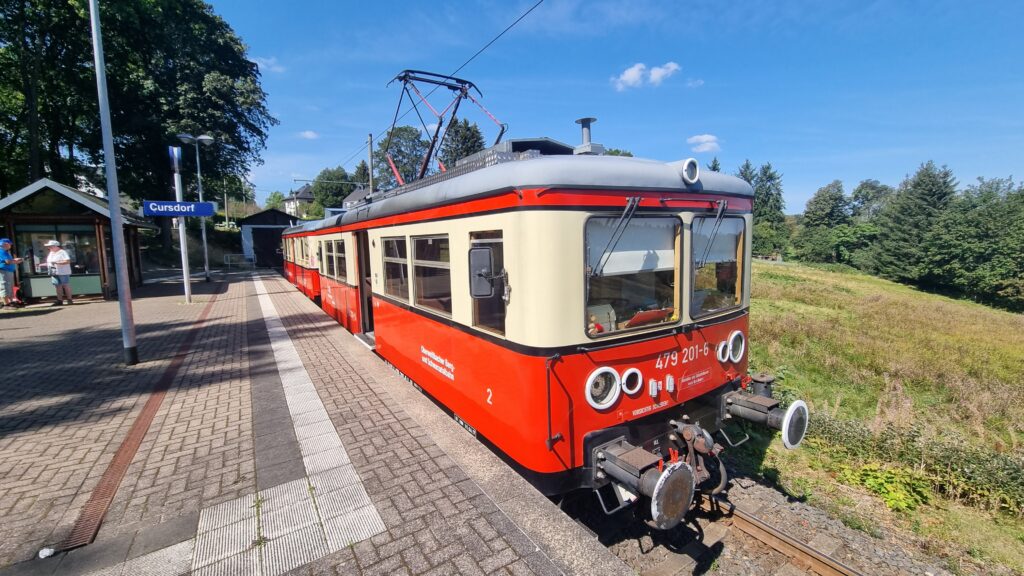
My original plan was to reach Naumburg yesterday, but due to the cancelled train that wasn’t possible anymore so I settled for Weimar. I still wanted to visit Naumburg though because they have a wonderful old tram system which is also the one of the smallest systems in the entire world. It’s only 2.9 km long and consists of a single line that runs from the railway station to the city centre on a 30-minute schedule using old 1950s trams. Getting there turned out to be a little less stress-free than expected as the regional train between Jena and Naumbrug was stuck at a rural station for over 30 minutes. I had a connection in Leipzig to a 2-hourly train that I didn’t want to miss so my only option was walk to the next tram stop in Naumburg and take it back to the Hbf. It was still a lovely ride though with the driver manually opening the doors for me as I boarded, no electric doors on this tram.
Now for the home stretch on this day. I was looking forward to the trip between Leipzig and Chemnitz as it is usually run using old 1985 UIC-Z wagons hauled by a locomotive, a rare sight these days in Western Europe. But I was bitterly confronted by an Alstom Coradia Continental, one of the most boring trains with useless tiny windows that are placed too high to be peered out of. Once in Chemnitz I took a tram, that looked a lot like a bus, to my apartment and stopping on the way to get a Lebanese wrap that tasted awesome, especially for €4,-. Overall a decent day only spoiled a little by the delay in Jena.
Day 3 – Chemnitz to Czechia
It’s hot, around 35°C all day, so I’m glad I packed light. Today I’ll be heading into Czechia on some scenic regional lines through the Ore mountains. The D-ticket is valid on all regional trains through Germany and a few cross-border connections. They are not valid on Intercity and ICE trains, which makes sense. There are a few exceptions to that rule though and one of them is the IC17 between Chemnitz and Dresden. This service was introduced only two years ago in 2022, before then Chemnitz was the largest city in Germany not to have any long-distance trains. The state paid DB so that the D-ticket is valid on this service and I made use of it. It whisked us to Dresden Hbf in only an hour with some beautiful views of the German countryside including lots of abandoned factories from a bygone era.

From Dresden I would be travelling to Bad Schandau, a regional hub for tourism along the Elbe river and close to some of Germanies best tourist destinations like the Königstein and the Bastei, well worth a visit if you’re near. They also have a lovely old tourist tram travelling up the valley to a waterfall. I was here to catch the train into the mountains towards Rumburk, Czechia. The train is operated by DB together with the Czech railways and it would sadly be the first of many Siemens Desiro trains. The D-ticket is valid until the German border, after that I had to buy a Czech ticket which was €3,- for a 40 minute trip. Once in Rumburk I had a quick change onto another Desiro, this one sadly with no working AC which made for a horrible ride. Top speed is 40km/h for a ride of more than an hour, and the tracks were in horrible condition which lead to a back-breaking and eardrum-shaking experience. The view was nice though.
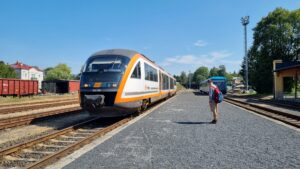
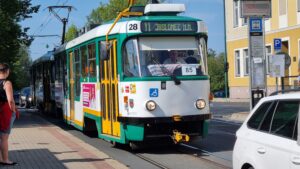
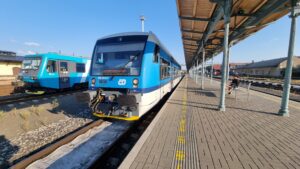
The goal of today was riding the interurban line between Liberec and Jablonec which was recently upgraded from metre gauge to standard gauge. The line runs parallel to a regular rail line with regional trains run with Stadler RegioShuttles. Apparently the Tatra 3 trams they use on this route, which look around 30 years old, were built in the early 2000s which really surprised me. I had a beer in lovely Jablonec and took the regional train back to Liberec. Here I changed back onto the Trilex which sadly turned out to be another Siemens Desiro ride. Luckily this one wouldn’t be as crowded and the AC seemed to work a little. It took us past Zittau and onto a recently reopened line to Varnsdorf, a small town right on the border with Germany. The last leg of the line was undergoing maintenance so I had to take a rail replacement bus to the station of Pivovar Kocour which was purpose built to serve the nearby brewery and restaurant. This is also where I would spend the night, but not in a regular hotel, no I wasn’t done with trains yet so I booked a room in a stationary sleeper car! Not the most comfortable, but cheap and historic, oh and breakfast buffet included.

Day 4 – Zittau to Leipzig
Day 4 starts with a free breakfast at the hotel and a bus to Varnsdorf station. Today I want to take a look at the steam trains in the Zittau valley. These narrow gauge trains take passengers from Zittau main station to the towns of Oybin and Jonsdorf on two different branches. I took the train to Oybin at 10am and it was a wonderful ride. The ticket was only €10,- for the entire day since I had the D-ticket. The entire train consisted of dining carriages with a small cafe in the middle. It was pretty empty, especially for a summer holiday, but the crowds got larger in Oybin when we encountered a large group of seniors on a tour. I hopped onto the road-train which took me up the mountain to the beautiful Oybin monastery ruins. The view from up there was wonderful and it was one of the best ruins I have ever visited, and I’ve visited a lot.
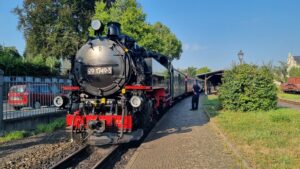
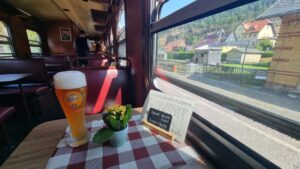
I walked back and passed an old mountain church which had been built into the mountainside and then I descended back down to the station. 1.5 hours after getting dropped off I hopped back on the train to Zittau. I didn’t fancy visiting Zittau itself so I took a painstakingly hot Desiro to Görlitz, a small city on the border with Poland which still operates a small 2-line tram network with 1980s Tatra KT4D-C cars. They will be getting an upgrade soon though and I suspect that in 5-10 years time there will be no remaining German cities operating their old DDR tram vehicles.
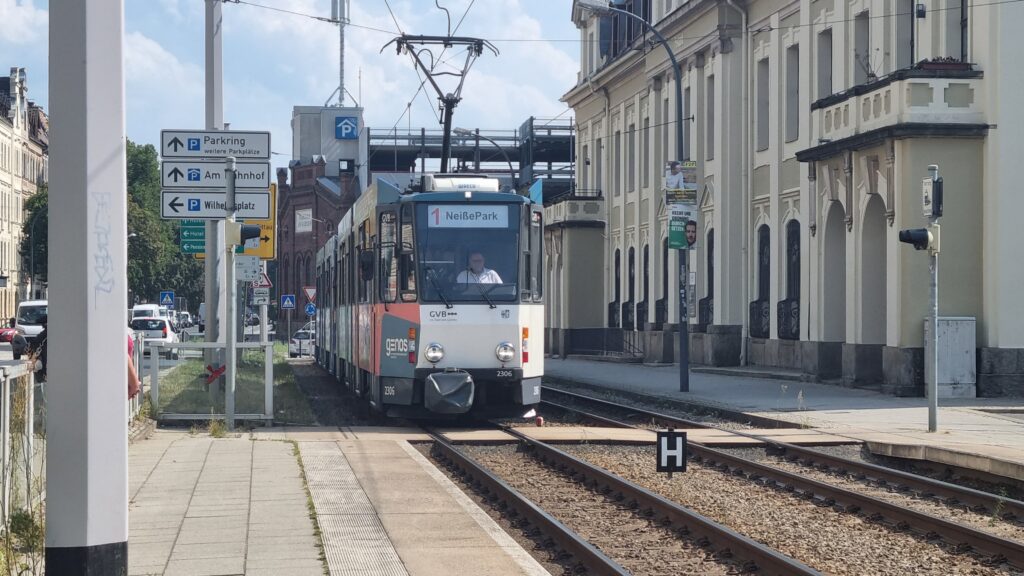
The trains service between Zittau and Cottbus is hourly so I only rode the tram 1 stop, got off and had lunch and walked back to the train station. Another Desiro! Fun!….. Luckily this should be the last of the journey and it will take me from Görlitz to Cottbus sadly whilst standing and getting dripped on by the leaking AC coolant.
Cottbus also has old Tatra trams, it seems to be a pattern among the old DDR towns I’m visiting. I had an hour to kill before my train to Leipzig so I made my way onto a bus to the centre and posted my letters to my grandparents and girlfriend. On the way back I took one of the trams which has a great viewing area at the back just like the GTL trams in Den Haag. Cottbus train station has a temporary art work that I though had something to do with DB-red colour but after thinking a little longer it was clear that it was the warming stripes that show the average temperature each year getting warmer. I wonder how many people realise this is what the artwork represents.
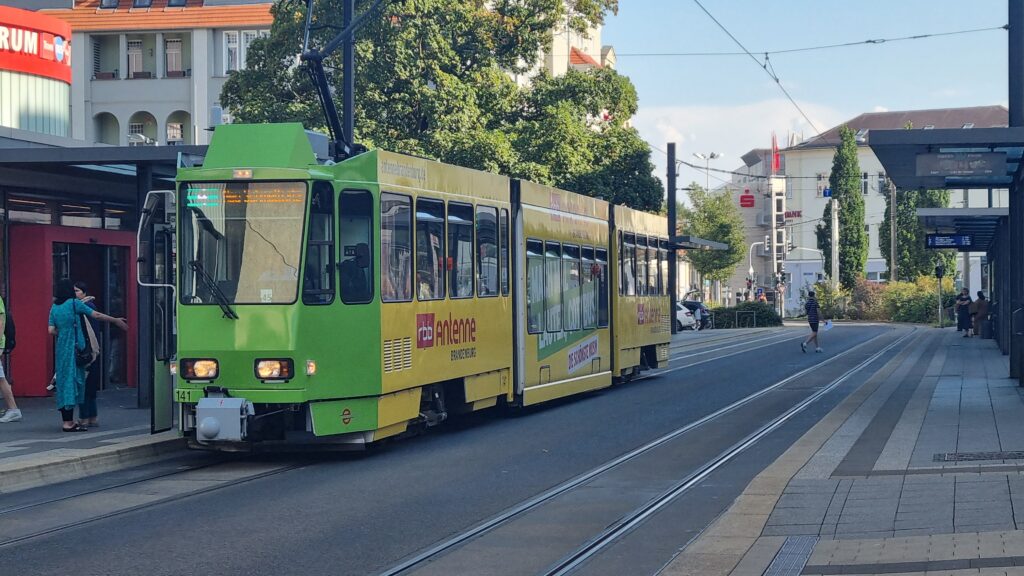
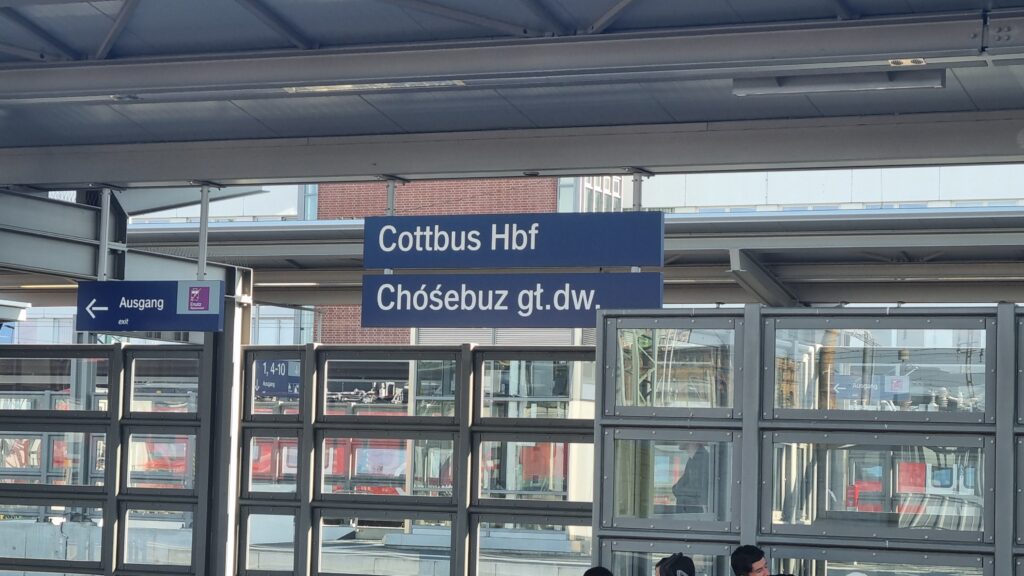
The regional express to Leipzig was very direct and comfortable inside a new DB Siemens Mireo. The ride took 1 hour and 48 minutes and dropped me off at the largest train station in Europe. Leipzig built a S-bahn city centre tunnel a few years back which made getting to the market square a 1-minute breeze.
Day 5 – Leipzig to Hannover
My grandpa called me and recommended I take the Harzquerbahn on my way back to The Netherlands. He’s a large steam train fanatic and used to take the big German steam trains to school each day so I took his word for it. It was absolutely worth it, especially considering it cost me nothing! The Harzquerbahn is included in the D-ticket with the exception of the final climb up the Brocken mountain which I have done before so I could skip that anyways.
The train starts in Nordhausen which is a small city at the south of the Harz mountains. It still has a small tram network that includes an interurban diesel tram which runs to the town of Ilfeld. What makes this trip so interesting is that the steam trains share the tracks with this interurban diesel tram! I think this has to be one of the most peculiar yet amazing pieces of train track I have ridden. What makes it even better is that regular commuters use the steam train too! Since the diesel service is only once per hour and the steam train passes by a couple times per day it’s actually a viable option for some. The steam train is even a little faster as it skips some of the stops.

After passing Ilfeld we begin our climb up the Harz mountains winding through the forests which have largely been decimated by beetles and thus have left a barren landscape of pine trees sticking out of the ground like needles without any green left. Once the landscape levels out somewhat the mountain becomes more sparsely forested and we are out in the open with beautiful views of the surrounding lower lands and the Brocken mountain. This was once right on the border between West and East Germany and both sides made sure to but their fair share of observation posts and antenna’s around the place which can still be spotted. The closest we get to the border is just under 1000 meters, just after we pass the village of Sorge. We stay on the East German side the whole time which is now the State of Sachsen-Anhalt.
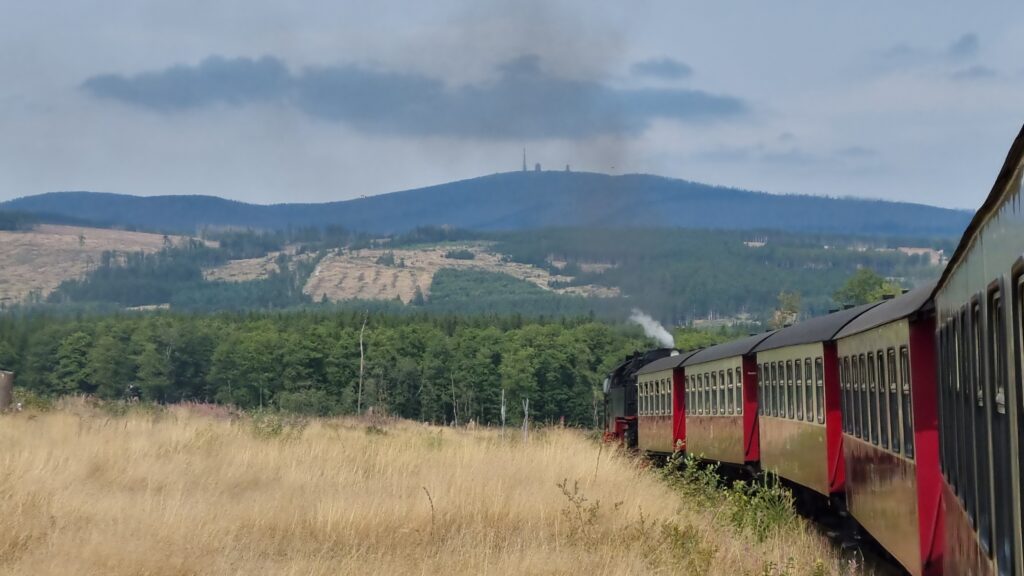
We reach the station of Drei Annen Hohne where we could change onto the train that goes straight up the Brocken mountain. I choose to stay on my train and we start the decent down the mountains again and into the valley to the North of the Harz region where we enter the town of Wernigerode. This town is quite lovely, hasn’t been bombed too much and therefore retains much of its historic city centre. I had the driest chicken I have ever eaten here, and it wasn’t even that cheap. Oh well, let’s bee-line for Hannover by hugging the Northern edge of the Harzgebirge.
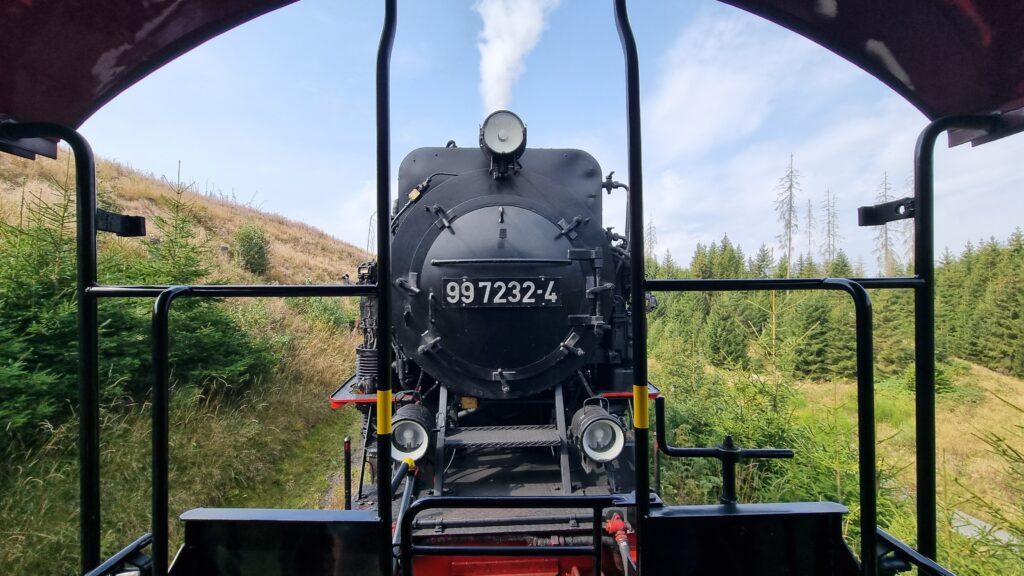
We pass Goslar and Hildesheim before we enter the Hauptbahnhof of Hannover, the 13th-largest city in Germany and home to the famous Hannover Messe which hosted the 2000 Expo and is the largest fairground/exhibition centre in the world. Hannover didn’t fair so well during WWII which is very visible when walking around the city. We are now in the former West-Germany and the cities here didn’t take as much effort as the East in restoring their historic buildings after the war. The only real building I saw which still looked like it was built before 1940 was the Hauptbahnhof.
Hannover has a very extensive Stadtbahn system with 13 lines grouped together in 4 colours, each colour stands for the tunnel/trunk it takes through the city centre or in the case of the two green lines, the fact that they stay on the surface completely. The system is laid out radially without any suburban loops connecting the branches which necessitates a transfer at the central station of Kröpcke where all except the green lines meet. I took the yellow line 6 to the Messe after checking in to my hotel, the most expensive one of this trip (it shows we are now in former West-Germany). It was 19h00 on a day without any event at the Messe so it was extremely deserted. They are building some new residential blocks next to the Messe so I did see some passengers but nothing like an event day. As the fairgrounds are private property it was quite hard to traverse them to get to the train station of Laatzen. I ended up taking a bus that took me around the Messe and to a Stadtbahn stop on the 1&2 lines. It ended up being a blessing in disguise as I found an American diner built in Orlando and shipped to Hannover in the 90s. I had already had dinner but I did just find the place where I would be having my breakfast tomorrow. After this lovely find I took the Üstra Stadtbahn back to my hotel.
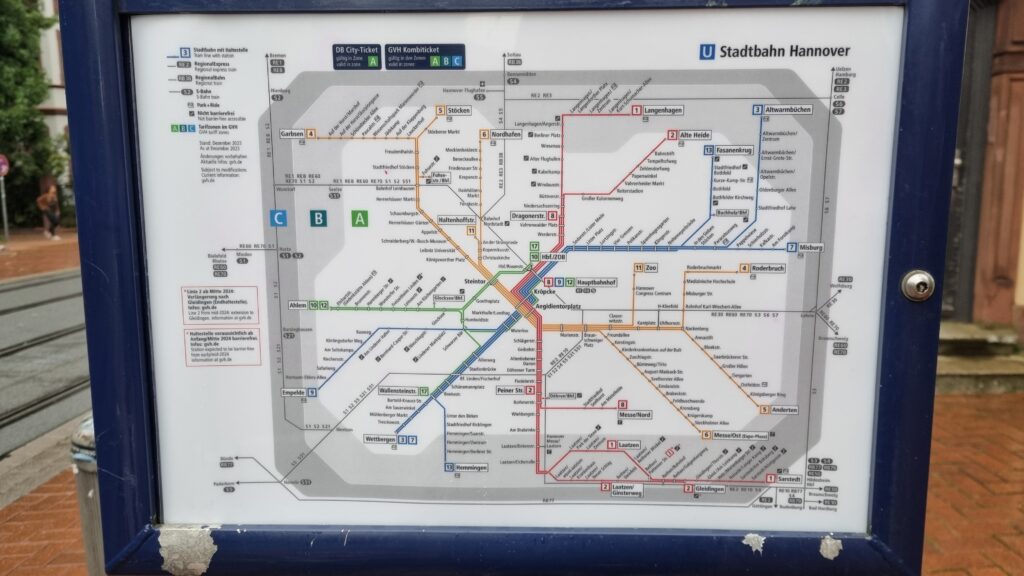
Day 6 – Hannover to Delft
I started the day at Mel’s Diner where I had a decently authentic American Diner breakfast experience with two eggs, bacon, toast and bottomless filter coffee served by a disgruntled waitress. I’d rate it 6/10 (but 9/10 for a European Diner), transit accessibility is great though, it is genuinely 12 meters away from the station entrance.
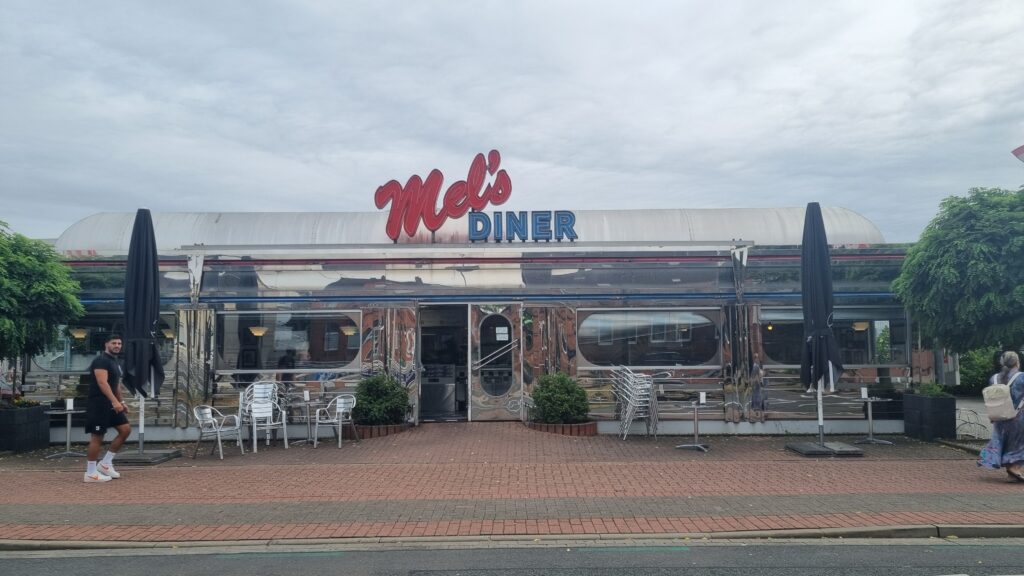
My time had come to head home and I’ll be honest with you, this was a boring ride. I didn’t book a ticket on the IC Berlin-Amsterdam which would get me directly from Hannover to Amsterdam as I was going to travel cheap. So I boarded the 2h20m RE60 operated by WestfalenBahn, operated by abellio, operated by NS (these TOC’s are getting out of hand…). At Rheine I changed onto the RB61 to Hengelo. I didn’t really trust this to show up as this service is infamous for its unreliability, 14% of the services are cancelled, but it did and it took me to Hengelo with a 10 minute delay, fine by me. Back on home soil it was an easy NS Intercity from Hengelo to Den Haag, crossing the entire country East to West in 2h12m and then changing to the Sprinter to Delft where our journey ends.

Leave a Reply